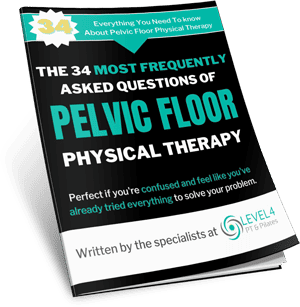DIASTASIS RECTI
Diastasis Recti often occurs during pregnancy when the growing baby stretches the abdominal muscles and tissues. Some women’s abdominal area heals on its own after the baby is born, but approximately 33% of women’s don’t heal completely postpartum by 6-8 weeks. So is your belly pooch because of diastasis or is there another underlying issue? A proper self-assessment or seeing a Physical Therapist is key to finding out.
Click here to try our free self-assessment tool
I do hear quite a bit from women that they were told they need surgery to repair diastasis. I would like to inform you THERE IS HELP for this without surgery!
This is not something your OB/GYN will always assess at your 6 week post delivery visit and more moms are inquiring and searching “Google” for solutions.
THE FACTS…
Physical Problems Caused By Diastasis Recti:
The separation of the abdominal muscles can cause a number of problems including:
- Difficulty restoring the tone in their abdomen (i.e. abdominal bulge)
- Lower back problems
- Pelvic instability/Hip pain (i.e. sacroiliac and/or pubic symphysis)
- Pelvic floor problems (e.g. decreased bladder control)
Want a guided exercise program by a women’s health physical therapist? Sign up for the “Restore Your Core & Pelvic Floor” 6 week series at CAP Wellness Center starting August 14
Which Abdominal Muscles To Start Exercising?
Diastasis healing starts with restoring control of the deep abdominal (Transverse Abdominis) muscles. These are the deepest layer of the 3 layers of abdominal muscles.
The Transverse Abdominis (TA) muscles contract and they draw the diastasis or separation together. This then promotes diastasis for healing and repair.
It’s important NOT to focus on solely exercising the outer Rectus Abdominis muscles with intense core exercises during the initial stages of repair. (Planks, crunches, oblique crunches, and double leg exercises)
How To Start Diastasis Exercises?
Start your diastasis exercises by learning to correctly activate your deepest abdominal muscles. When you know how to activate these muscles you can start to use them during your everyday activities to promote your diastasis healing and avoid further separation.
Exercise Technique
The correct technique to start exercising your deepest abdominal muscles:
- Start sitting on your exercise ball or a chair.
- If you’re sitting on a chair move forward from the back rest.
- Set your posture by lifting the crown of your head and lengthening your spine.
- Maintain the inward curve in your lower back throughout.
- Place your hands over your lower abdomen.
- Gently contract and draw your lower abdomen inwards towards your spine while maintaining your breathing.
- Maintain this gentle contraction up to 10 seconds.
- Breathe normally throughout.
- Relax and release your lower abdominal muscles.
*The deep abdominal muscles work gently – avoid over bracing these muscles to avoid placing strain on your diastasis.
Mistakes To Avoid With Diastasis Recti Exercises
Avoid these commonly made mistakes:
- Over bracing the abdominal muscles – less is more when it comes to contracting the deepest abdominal muscles
- Breath holding – breathe normally throughout these exercises
- Slumping forwards – maintain good upright posture to encourage deep abdominal activation
- Crunches and intense core abdominal exercises – these exercises can delay or worsen diastasis recti separation.
Where To Practice Your Exercises?
To start out, perform your exercises in sitting, standing, or when you are on your back with knees bent until you become more confident with the movements.
When you’re confident in your exercise technique, practice activating your deep abdominal muscles when you move. Try to use your deep abdominal muscles during your everyday activities e.g. when carrying your baby or pushing the stroller.
Key Points For Diastasis Recti Repair
- Regular daily deep abdominal exercises guided by a physical therapist can help to draw the diastasis closer and change the quality of the tissue beneath the separation to encourage healing and repair.
- Practice using your deep abdominal muscles during your everyday activities when you’re confident in your technique.
- No matter how long after pregnancy, proper training can still make a difference in healing, which is great news! Surgery should not be an option until proper rehab has been exhausted.
- Think of it as "healing diastasis" not necessarily "closing the gap" to make you fully functional and to prevent further issues.
By Dr. Dawn D. Andalon, DPT, MTC, CPI
**WATCH THIS VIDEO ABOUT SAFE RETURN TO EXERCISE AFTER HAVING A BABY…**
Have more questions or would like a copy of a Free Report on “8 Simple Ways to Ease Back Pain after Labor” Click the RED below to receive your copy.
YES… I Want A FREE Postpartum Back Pain Tips Report!!
- The Link Between Menopause and Back Pain - May 21, 2024
- 3 Proven Ways You Can Relieve Sciatic Pain While Sleeping - September 14, 2023
- Menopause and the Impact It Can Have On Your Weight - August 4, 2023

















